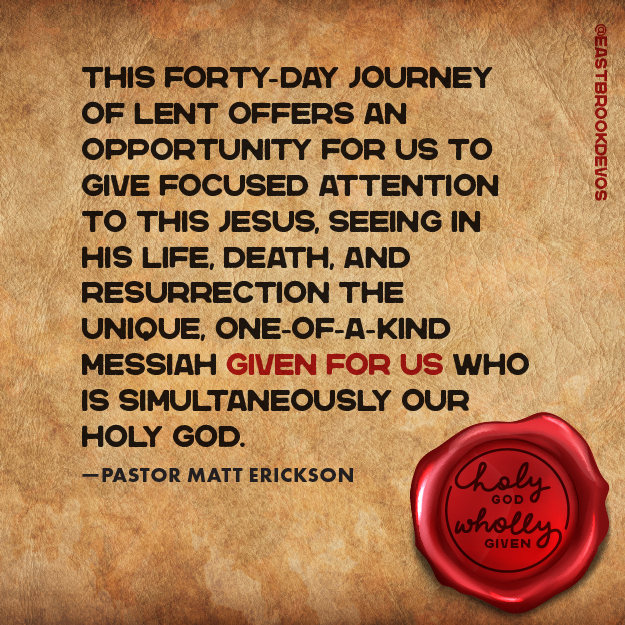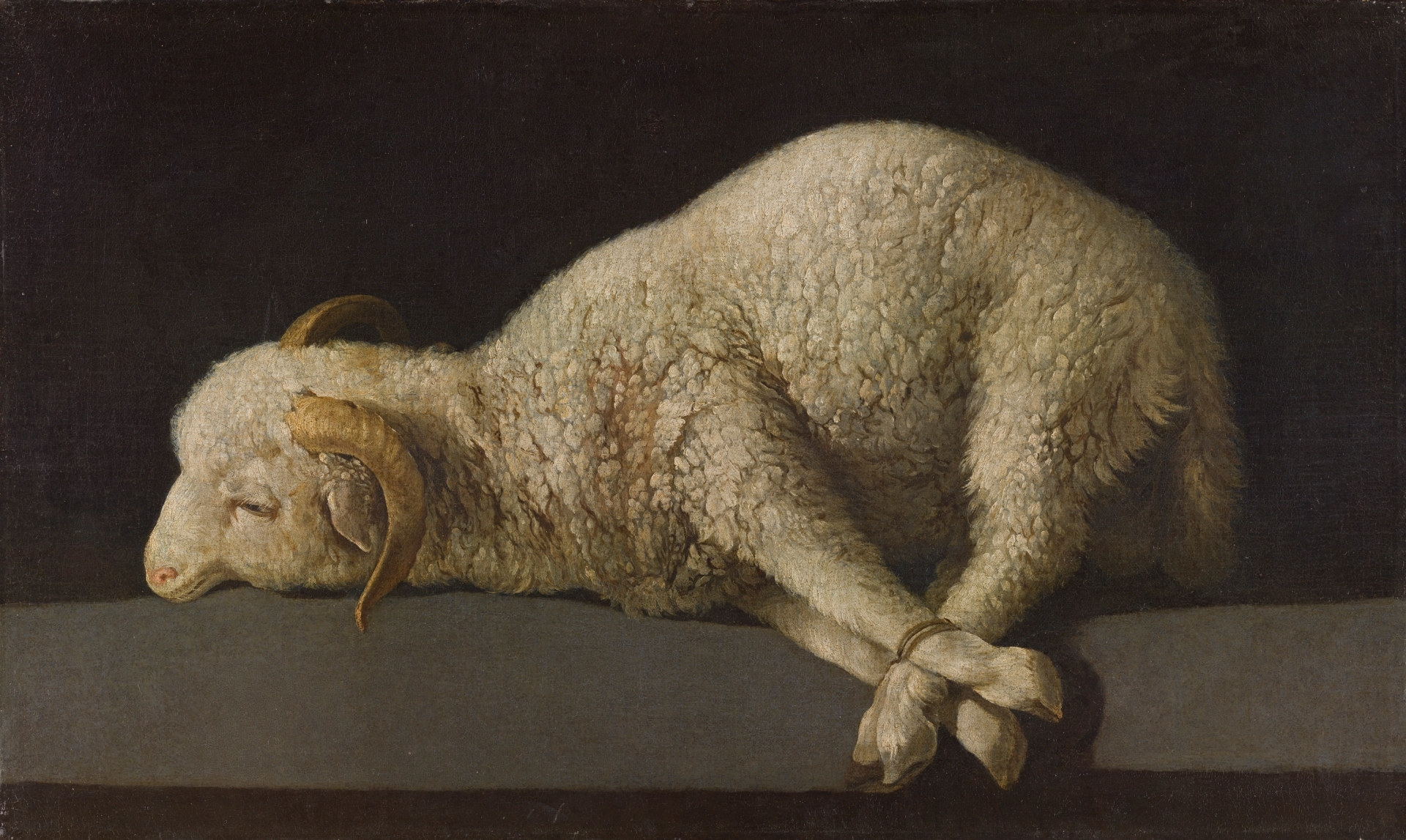Lent traces Jesus’ journey to the Cross, providing an opportunity for us as followers of Jesus to bring greater focus to Jesus’ crucifixion and what that means for us in all its multifaceted glory. When we think of biblical backgrounds for this season, we may most readily turn toward the gospel accounts or perhaps Isaiah’s prophecies about the suffering Messiah or the Exodus story of freedom from Egyptian enslavement. But there is another place we might want to turn when considering Jesus as the perfect sacrifice, the one-of-a-kind high priest, or the bringer of a new covenant. That place is found at the very center of the Torah, the first five books in our English Bibles: Leviticus.
But Leviticus does not have the best reputation for contemporary Bible readers. Often seen as a catalog of outdated guidelines, many followers of Jesus skip Leviticus in their regular reading of the Bible. One scholar begins a book-length commentary on Leviticus this way: “Leviticus used to be the first book that Jewish children studied in the synagogue. In the modern Church it tends to be the last part of the Bible anyone looks at seriously.”
Perhaps we need to turn our attention to Leviticus again. For in that book, we find innumerable treasures that help us comprehend what God has done in Jesus Christ. Throughout this Lenten devotional and preaching series, we will explore many of those themes encountered in Jesus: the Holy God who dwells with broken humanity, the perfect offering, the perfect high priest, holy obedience, atonement, the jubilee, and more. The New Testament epistle to the Hebrews echoes many of Leviticus themes, gathering them together in powerful statements about Jesus like this:
“For this reason he had to be made like them, fully human in every way, in order that he might become a merciful and faithful high priest in service to God, and that he might make atonement for the sins of the people.” (Hebrews 2:17)
This forty-day journey of Lent offers an opportunity for us to give focused attention to this Jesus, seeing in His life, death, and resurrection the unique, one-of-a-kind Messiah given for us who is simultaneously our Holy God. We focus on Jesus and also give attention to how we might intentionally grow with God through Christ. This Lenten devotional guide written by people within the Eastbrook Church family aims to help us draw near to Jesus Christ through Leviticus.
I pray this journey together as a church draws us into a transforming encounter with Jesus—His life, His death, and His resurrection.
+ The peace of the Lord,
Matt Erickson
Senior Pastor, Eastbrook Church

How to Use this Devotional:
- Each week of this devotional begins with a Sunday reading written by our Pastoral staff for older students and adults. There is also a version called “Family Talk” written by a member of our NextGen team, intended for families with young children.
- Each day Monday-Friday has a short devotional thought written by one of our Eastbrookers with questions at the end for deeper reflection.
- On Saturdays, there is a page that will guide you through a different spiritual practice or discipline for the week. You will also find a web link you can visit to watch one of our pastors, church leaders, or staff members leading you through this particular practice. Even as we guide you through these practices, remember that the spiritual disciplines in and of themselves are not the goal. Rather, they are tools we use on our journey of sanctification as we aim to become more like Jesus Christ.
- Finally, you can also interact with the digital version of this devotional in a variety of ways: on the Eastbrook App, on Instagram, via daily emails, this blog, or PDF. Find these options and links on our website at eastbrook.org/LeviticusDevo.
About Leviticus
Leviticus is the third book of five in the Pentateuch, or books of Moses. The immediate context of Leviticus is the book Exodus and the deliverance of God for His people from enslavement in Egypt. God calls the people to Himself and to freedom in Exodus and Leviticus then describes what it means for them to live in relationship to God both individually and corporately.
Some scholars describe Leviticus as the center point of the Pentateuch not only in terms of arrangement but in terms of significance. They propose a chiastic structure of the Pentateuch where themes in Genesis are echoed in Deuteronomy, themes in Exodus are echoed in Numbers, and Leviticus stands at the narrative center, describing how to live in fellowship with a holy God. L. Michael Morales writes, “The primary theme and theology of Leviticus (and of the Pentateuch as a whole) is YHWH’s opening a way for humanity to dwell in the divine presence.”
Outline of Leviticus
- Ritual/sacrifices (chapters 1-7)
- Priesthood and priest’s ordination (chapters 8-10)
- Purity laws/daily cleanliness (chapters 11-15)
- Day of atonement/reconciliation (chapters 16-17)
- Purity laws/daily cleanliness (chapters 18-20)
- Priesthood/Priest’s instructions (chapters 21-22)
- Ritual/sacrifices and feasts (chapters 23-26, 27)
Themes in Leviticus
Leviticus holds many things together, but largely emphasizes the following four themes: God’s presence, holiness, purity, and sacrifice.
- God’s presence at the center of God’s people is a theme that pervades Leviticus, following the Exodus narrative of the deliverance from Egypt. The very first words of the book make this clear: “The LORD called to Moses and spoke to him from the tent of meeting” (1:1).
- Holiness, both God’s holiness and the call to holiness for God’s people, is a second theme of Leviticus. YHWH God is unlike any other being in all creation, let alone any other supposed god. Because of this, God’s people are to be unlike other people groups of the earth. This dual theme is seen repetitively, but perhaps best expressed by this verse: “I am the LORD, who brought you up out of Egypt to be your God; therefore be holy, because I am holy” (11:45).
- Purity is another theme of Leviticus, depicted in the setting apart of certain things as holy or devoted to the Lord. The distinction between things for common usage and holy usage is uniquely strong in Leviticus. At times, this is directed toward the priests, but it has implications for the entire people. “Distinguish between the holy and the common, between the unclean and the clean, and so you can teach the Israelites all the decrees the LORD has given them through Moses” (10:10-11).
- A final theme in Leviticus is sacrifice. The first seven chapters of the book begin with five ritual offerings: burnt offering, grain offering, peace offering, sin offering, and trespass offering. At the center of the book is a description of the Day of Atonement which brings together all four themes of the book, making it clear how it can be that a holy God can dwell with humanity. This is made possible through a recognition of purity, our sin that hinders purity, and the offerings that enable restored fellowship with a holy God for a sinful people.
Approaches to Law
There is a threefold distinction often utilized by Christian theologians in relation to God’s law as seen in the Hebrew Bible: moral law (valid for all time and represented in, for example, the Ten Commandments), civil law (time-bound and only pertains to the people of God at the time it was written), and sacrificial/ritual law (these laws are fulfilled in Christ).
Sidney Greidanus suggests that a better way to approach Leviticus is to understand Torah as God’s instruction. There is grace within this teaching because it reveals God’s plan for the recently delivered people for their full flourishing. This also enables us to find meaning within the law, holding to Jesus’ word in the Sermon on the Mount, “Do not think that I have come to abolish the Law or the Prophets; I have not come to abolish them but to fulfill them” (Matthew 5:17) and Paul’s words, “Do we, then, nullify the law by this faith? Not at all! Rather, we uphold the law” (Romans 3:31). There is both a freedom in Christ from the instructions of Leviticus but also, as seen in Jesus’ Sermon on the Mount, a call to surpass the righteousness of the scribes and the Pharisees (Matthew 5:20).
New Testament and Leviticus
There are many points of connection with Leviticus as we walk through the Gospels, Paul’s letters, the epistle to the Hebrews, and various other places. Jesus is “the perfect priest offering the perfect sacrifice in the heavenly Temple, once for all” in response to Leviticus’ emphasis on the repetition of morning and evening daily sacrifices.
And so, with that, let’s jump into this year’s Lenten devotional!
Recommended Posts

Following Our King
April 19, 2025

Practice: Jubilee
April 18, 2025

A Gift of Grace
April 17, 2025


